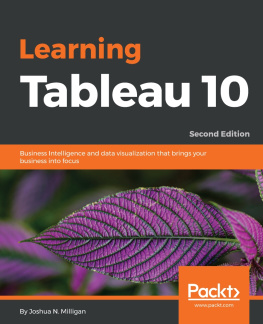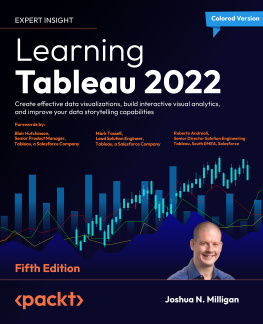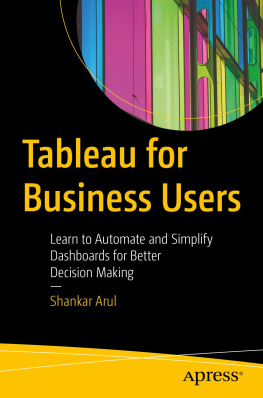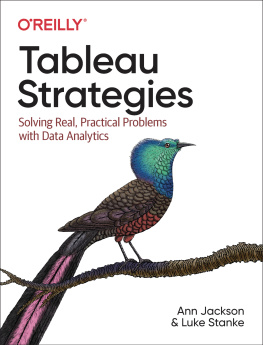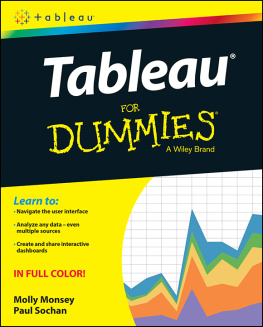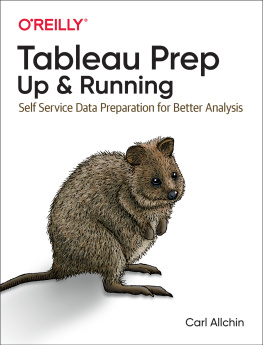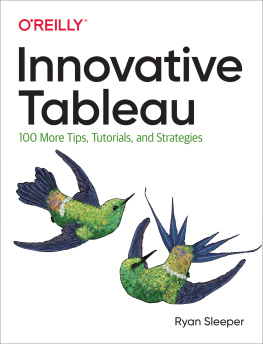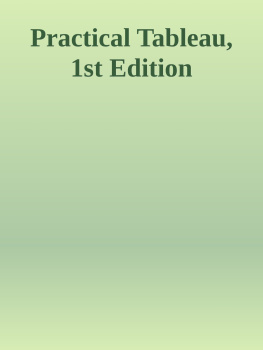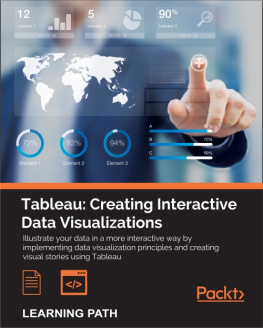Jones - Communicating data with Tableau : [designing, developing, and delivering data visualizations; covers Tableau version 8.1]
Here you can read online Jones - Communicating data with Tableau : [designing, developing, and delivering data visualizations; covers Tableau version 8.1] full text of the book (entire story) in english for free. Download pdf and epub, get meaning, cover and reviews about this ebook. City: Beijing, Köln u.a, year: 2014, publisher: OReilly Media, genre: Home and family. Description of the work, (preface) as well as reviews are available. Best literature library LitArk.com created for fans of good reading and offers a wide selection of genres:
Romance novel
Science fiction
Adventure
Detective
Science
History
Home and family
Prose
Art
Politics
Computer
Non-fiction
Religion
Business
Children
Humor
Choose a favorite category and find really read worthwhile books. Enjoy immersion in the world of imagination, feel the emotions of the characters or learn something new for yourself, make an fascinating discovery.
- Book:Communicating data with Tableau : [designing, developing, and delivering data visualizations; covers Tableau version 8.1]
- Author:
- Publisher:OReilly Media
- Genre:
- Year:2014
- City:Beijing, Köln u.a
- Rating:4 / 5
- Favourites:Add to favourites
- Your mark:
Communicating data with Tableau : [designing, developing, and delivering data visualizations; covers Tableau version 8.1]: summary, description and annotation
We offer to read an annotation, description, summary or preface (depends on what the author of the book "Communicating data with Tableau : [designing, developing, and delivering data visualizations; covers Tableau version 8.1]" wrote himself). If you haven't found the necessary information about the book — write in the comments, we will try to find it.
Go beyond spreadsheets and tables and design a data presentation that really makes an impact. This practical guide shows you how to use Tableau Software to convert raw data into compelling data visualizations that provide insight or allow viewers to explore the data for themselves.
Ideal for analysts, engineers, marketers, journalists, and researchers, this book describes the principles of communicating data and takes you on an in-depth tour of common visualization methods. Youll learn how to craft articulate and creative data visualizations with Tableau Desktop 8.1 and Tableau Public 8.1.
- Present comparisons of how much and how many
- Use blended data sources to create ratios and rates
- Create charts to depict proportions and percentages
- Visualize measures of mean, median, and mode
- Lean how to deal with variation and uncertainty
- Communicate multiple quantities in the same view
- Show how quantities and events change over time
- Use maps to communicate positional data
- Build dashboards to combine several visualizations
Jones: author's other books
Who wrote Communicating data with Tableau : [designing, developing, and delivering data visualizations; covers Tableau version 8.1]? Find out the surname, the name of the author of the book and a list of all author's works by series.

![Jones Communicating data with Tableau : [designing, developing, and delivering data visualizations; covers Tableau version 8.1]](/uploads/posts/book/108879/thumbs/jones-communicating-data-with-tableau.jpg)






